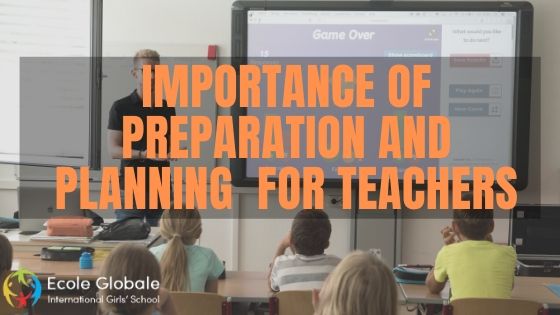Effective teaching is not just about delivering lessons but about preparing and planning meticulously to ensure every student receives the best educational experience. This article delves into the critical aspects of preparation and planning for teachers, highlighting strategies to optimize classroom effectiveness.
Why Preparation and Planning are Crucial for Teachers
Preparation and planning form the backbone of effective teaching. Teachers who invest time in planning their lessons are more likely to engage their students, manage their classrooms efficiently, and meet educational goals. Here are the main reasons why preparation and planning are essential:
- Enhanced Student Engagement: Well-prepared lessons capture students’ attention and keep them interested in learning.
- Efficient Classroom Management: Planning helps in organizing classroom activities and managing time effectively.
- Achieving Learning Objectives: Clear lesson plans ensure that educational goals are met systematically.
- Adaptability: Teachers can better adapt to unexpected changes and different learning paces.
- Professional Growth: Continuous planning and reflection on teaching methods contribute to a teacher’s professional development.
Key Strategies for Effective Teaching
To maximize the impact of their preparation and planning, teachers should consider incorporating the following strategies:
Differentiated Instruction
Differentiated Instruction involves tailoring teaching methods to accommodate different learning styles and abilities.
- Individualized Learning Plans: Create customized learning plans based on students’ strengths and weaknesses.
- Variety of Teaching Methods: Use a mix of instructional strategies, such as visual aids, hands-on activities, and technology integration.
- Ongoing Assessment: Regularly assess student progress and adjust instruction accordingly.
Inquiry-Based Learning
Inquiry-Based Learning encourages students to ask questions, explore, and engage in critical thinking.
- Stimulate Curiosity: Pose challenging questions and problems that require deep thinking.
- Research Projects: Assign research projects that require students to investigate topics in depth.
- Facilitate Discussions: Encourage open discussions where students can share their findings and viewpoints.
Cooperative Learning
Cooperative Learning promotes teamwork and communication among students.
- Group Activities: Organize group activities that require collaboration and problem-solving.
- Peer Teaching: Allow students to teach each other, reinforcing their own understanding.
- Role Assignments: Assign specific roles within groups to ensure active participation from all members.
Graphic Organizers
Graphic Organizers help students organize and visualize information.
- Concept Maps: Use concept maps to show relationships between ideas.
- Venn Diagrams: Employ Venn diagrams to compare and contrast different concepts.
- Timelines: Create timelines to help students understand historical events and sequences.
Technology Integration
Integrating technology into the classroom can enhance learning experiences and engagement.
- Interactive Tools: Utilize interactive tools like smartboards and educational apps.
- Online Resources: Provide access to online resources and digital libraries.
- Virtual Classrooms: Implement virtual classrooms for a blended learning approach.
Student Assessment
Regular assessment is crucial for understanding student progress and adjusting teaching methods.
- Formative Assessments: Use quizzes, assignments, and informal assessments to gauge understanding.
- Summative Assessments: Conduct exams and final projects to evaluate overall learning.
- Feedback: Provide timely and constructive feedback to guide student improvement.
Classroom Management
effective teaching classroom management ensures a conducive learning environment.
- Clear Expectations: Set and communicate clear expectations for behavior and academic performance.
- Consistent Routines: Establish consistent routines to provide structure.
- Positive Reinforcement: Use positive reinforcement to encourage good behavior and academic effort.
Professional Development
Continuous professional development helps teachers stay updated with the latest educational trends and methods.
- Workshops and Seminars: Attend workshops and seminars to learn new teaching strategies.
- Peer Observations: Observe peers to gain insights into different teaching techniques.
- Self-Reflection: Regularly reflect on teaching practices and seek areas for improvement.
Frequently Asked Questions
Q1: Why is preparation and planning crucial for teachers?
A1: It enhances student engagement, supports effective teaching classroom management, and ensures educational goals are met effectively.
Q2: How can differentiated instruction benefit students?
A2: It caters to diverse learning styles, maximizing student understanding and participation in the classroom.
Q3: What is the importance of inquiry-based learning?
A3: It fosters critical thinking and curiosity, encouraging students to explore and deepen their understanding.
Q4: How does cooperative learning contribute to student success?
A4: It promotes teamwork and communication skills, enhancing learning through collaborative activities.
Q5: What role do graphic organizers play in teaching?
A5: Graphic organizers help students visualize and organize information, aiding comprehension and concept understanding.









